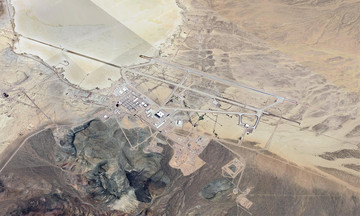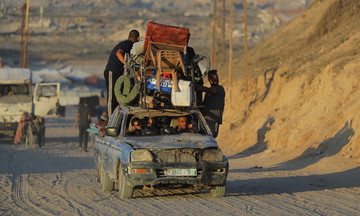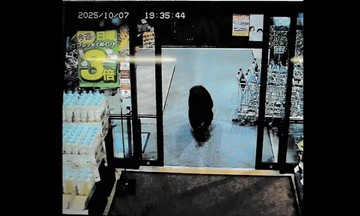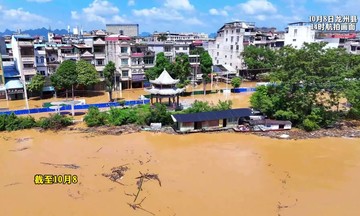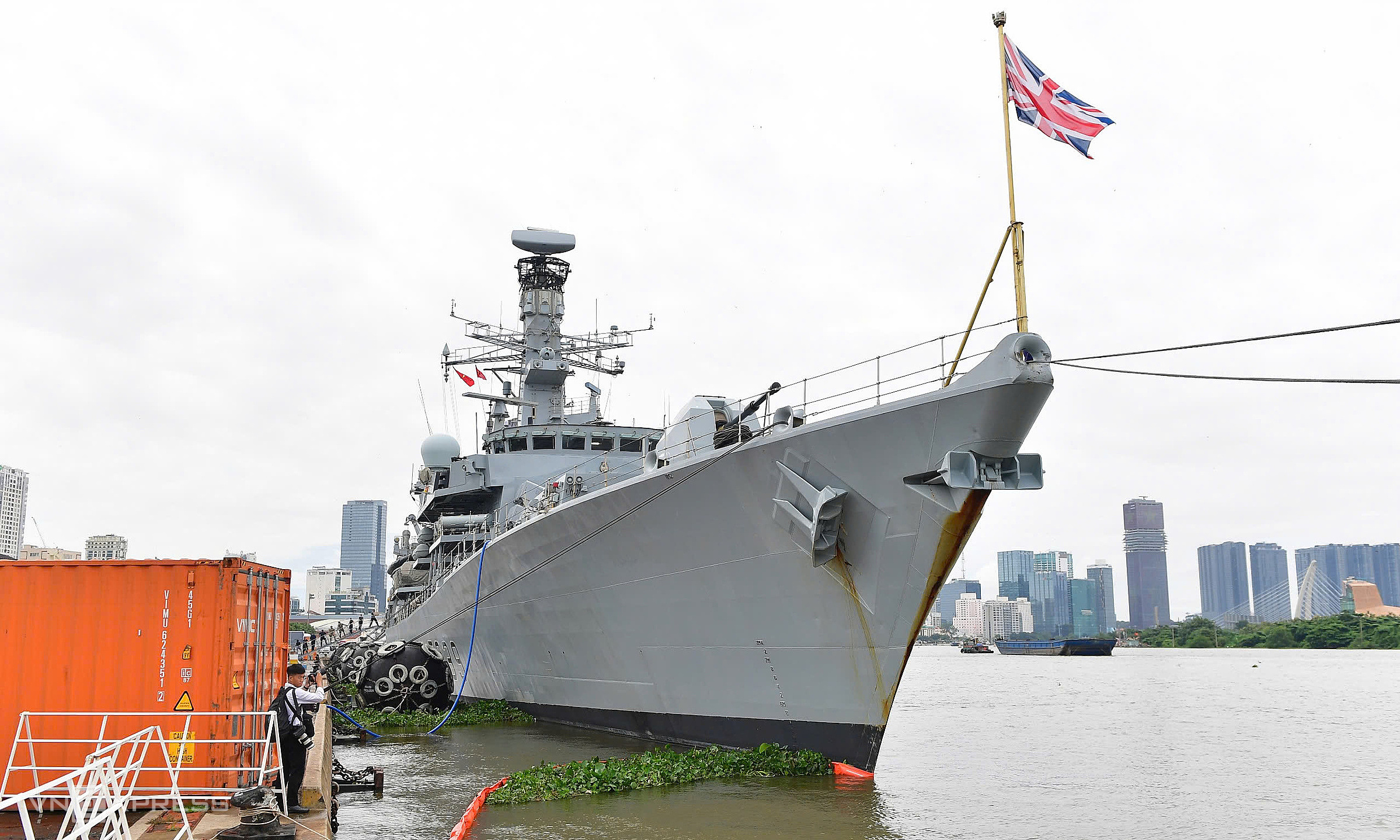 |
For air defense, HMS Richmond is equipped with the Sea Ceptor system, comprising 32 CAMM missiles with a range of 25 km. The missiles are housed in a GWS 35 vertical launching system, positioned between the NSM launchers and the forward gun turret. |
The frigate HMS Richmond, carrying 185 officers and sailors from the British Royal Navy, docked at Nha Rong-Khanh Hoi International Port in Ho Chi Minh City on 22/9, commencing a 4-day goodwill visit to Vietnam.
The visit coincides with the 15th anniversary of the Vietnam-UK Strategic Partnership, demonstrating the two nations’ commitment to enhancing bilateral diplomatic relations, particularly in defense and security cooperation.
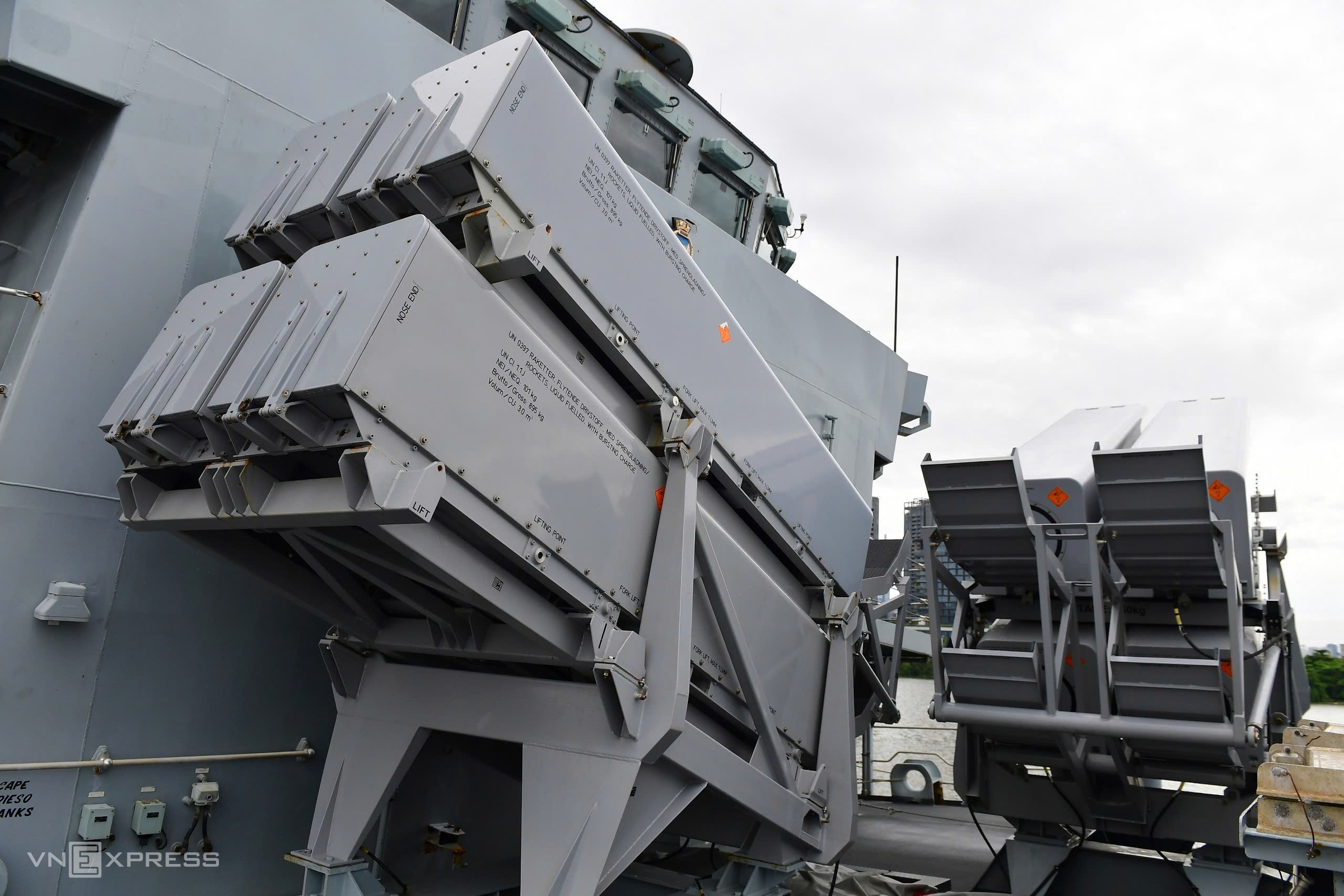 |
For anti-submarine warfare, Richmond is equipped with Stingray lightweight torpedo launchers on both sides of the ship. |
HMS Richmond, a Type-23 anti-submarine warfare frigate, was laid down in 1992 and commissioned in 1995. The vessel measures 133 meters in length, has a full load displacement of 4,900 tons, and an operational range of 14,000 km.
HMS Richmond's primary offensive weapon is the Norwegian-made Naval Strike Missile (NSM). It's the third British warship equipped with NSMs, replacing the American-made Harpoon anti-ship missiles.
Each NSM costs nearly 2.2 million USD, reaches a cruising speed of 1,140 km/h, and boasts a range of 200-300 km depending on the variant.
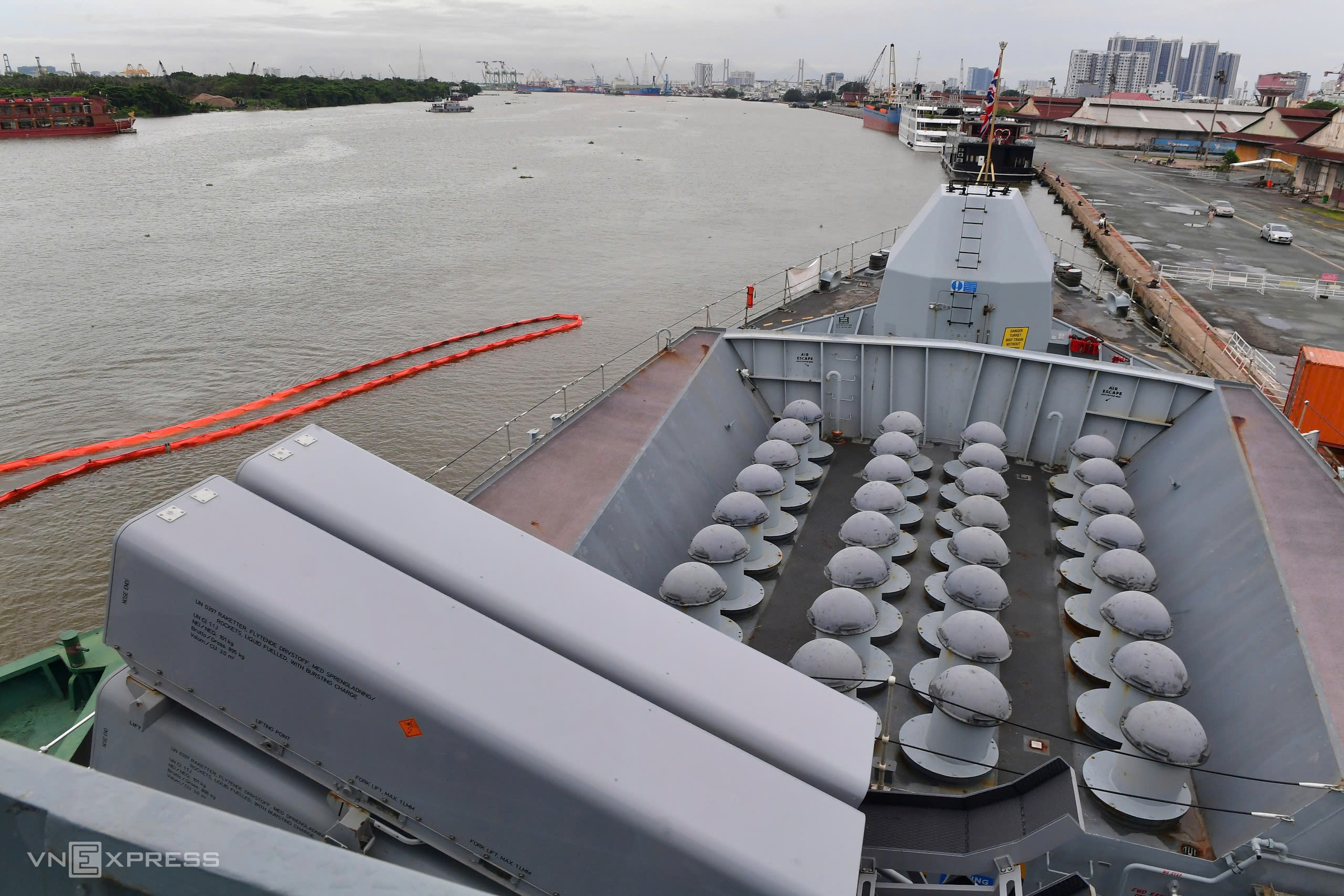 |
High-speed boats are used to deploy marines for coastal patrols, as well as to approach and board vessels at sea. |
 |
Commander Richard Kemp, HMS Richmond’s commanding officer, stated that this visit not only strengthens cooperation between the Royal Navy and its Vietnamese partners but also reaffirms the UK’s ongoing commitment to promoting stability and security in the Indo-Pacific region. |
The main gun provides fire support, engaging surface and land targets. British media reports indicate that the Mark 8's control software isn't ideally suited for air defense, but the gun can still intercept airborne threats.
The crew noted that the Mark 8 gun crew needs considerable strength to handle the nearly 40 kg shells, almost as tall as a person.
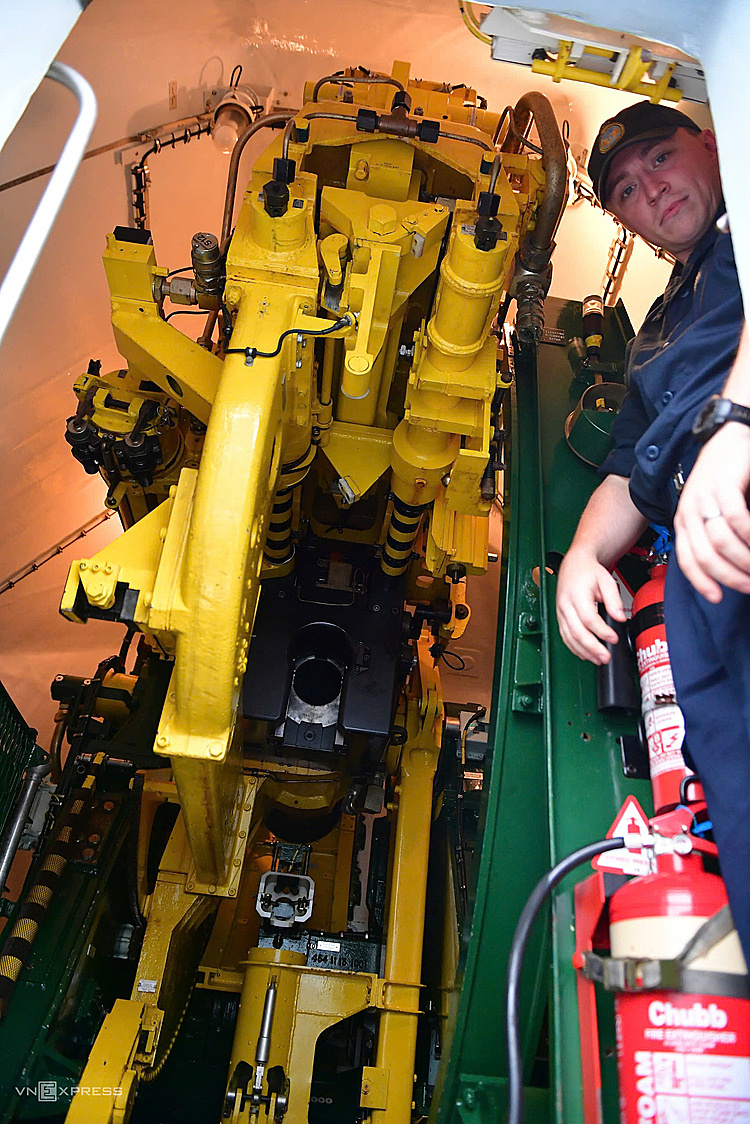 |
A weapons engineer from HMS Richmond inside the Mark 8 gun turret. The turret doors remain sealed during operation, and no one is allowed near. After firing, the gun crew must wait several minutes for the turret to vent toxic fumes and cool down before retrieving spent casings.
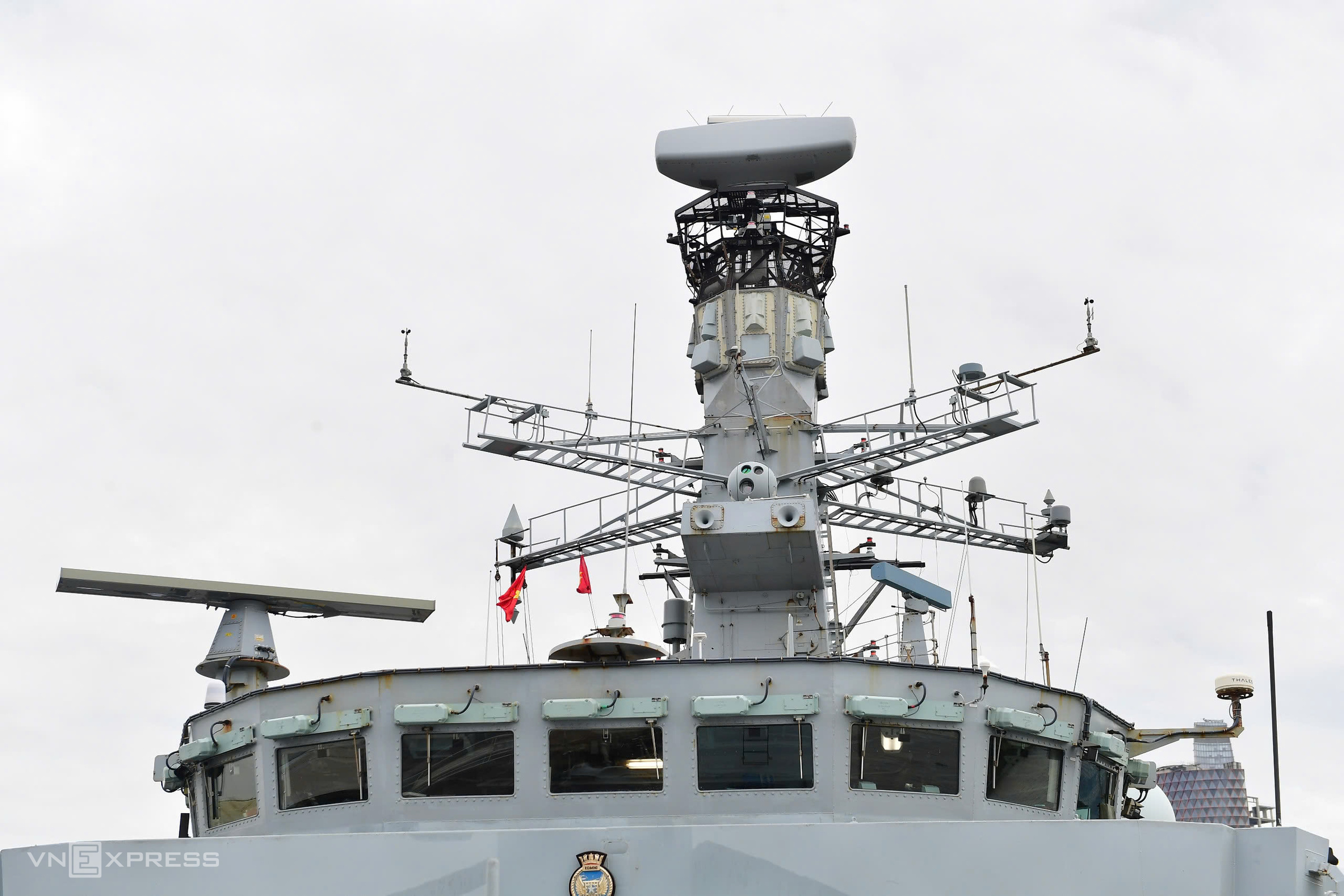 |
Atop the superstructure sits the mast, housing radar and sensor systems. HMS Richmond's primary sensor is the Type 997 Artisan 3D medium-range air and surface surveillance radar, located at the highest point of the mast. The manufacturer claims the Type 997 has a maximum range of 200 km, can track over 900 targets simultaneously, and possesses high electronic counter-countermeasures capabilities.
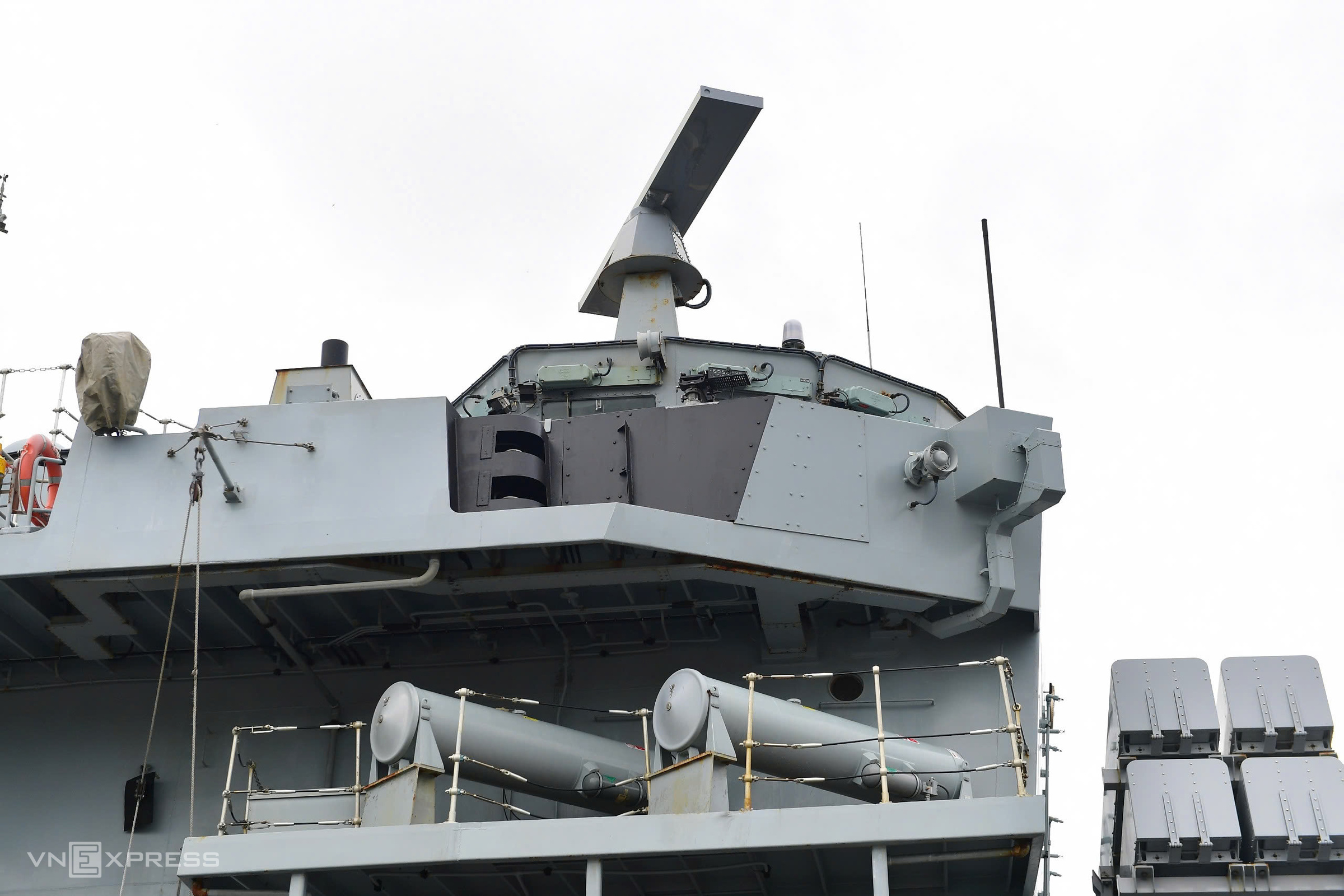 |
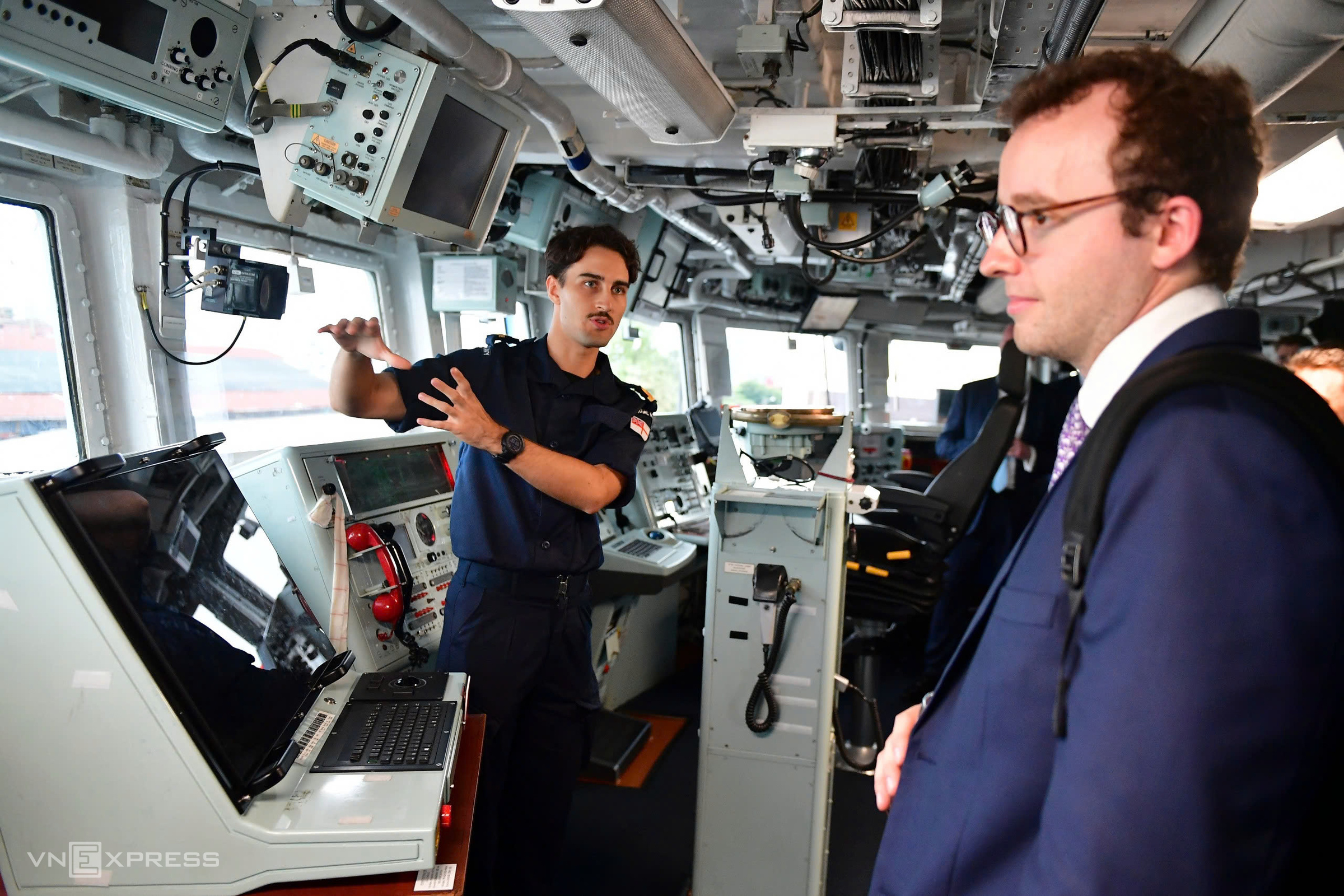 |
Inside HMS Richmond's command center. The Ho Chi Minh City visit is part of HMS Richmond's 8-month deployment, scheduled to conclude at the end of this year. The ship has traveled through the Indo-Pacific, providing the crew with real-world operational experience in diverse conditions.
The ship's executive officer stated that HMS Richmond saw action in the Red Sea earlier this year, protecting shipping lanes and shooting down two Houthi unmanned aerial vehicles (UAVs) in Yemen.
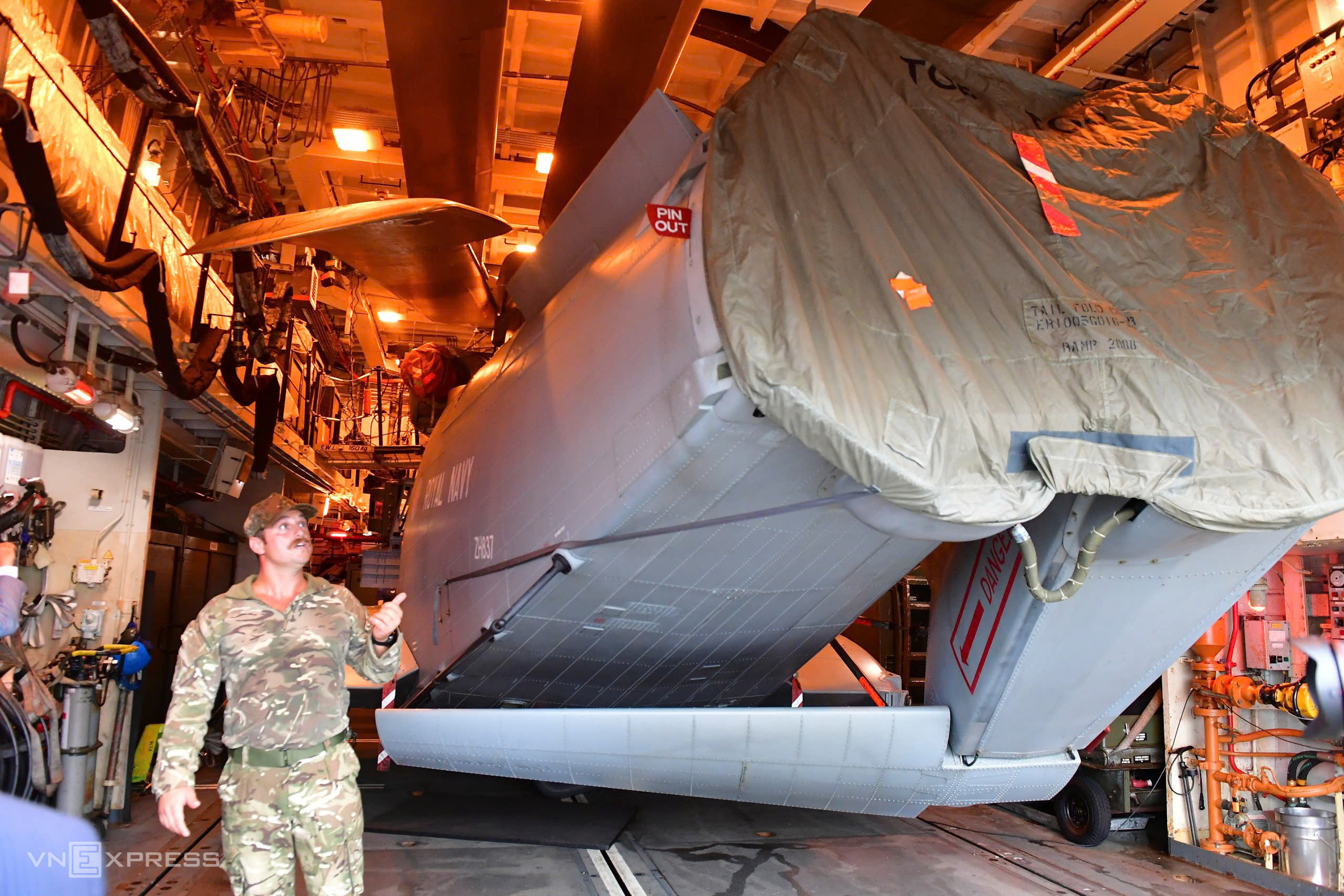 |
The ship also carries a Merlin Mark 2 helicopter, equipped with a dipping sonar and sonobuoys. An officer described it as the ship's "extended arm," enabling detection and tracking of submarines at long range. The helicopter can also carry Stingray torpedoes for underwater attacks.
The Merlin Mark 2 can operate continuously for three hours, carries a maximum payload of 2.5 tons, and can perform rescue missions in all weather conditions. Its spacious interior is adaptable, accommodating up to 17 soldiers and transforming into a rapid deployment platform when necessary.
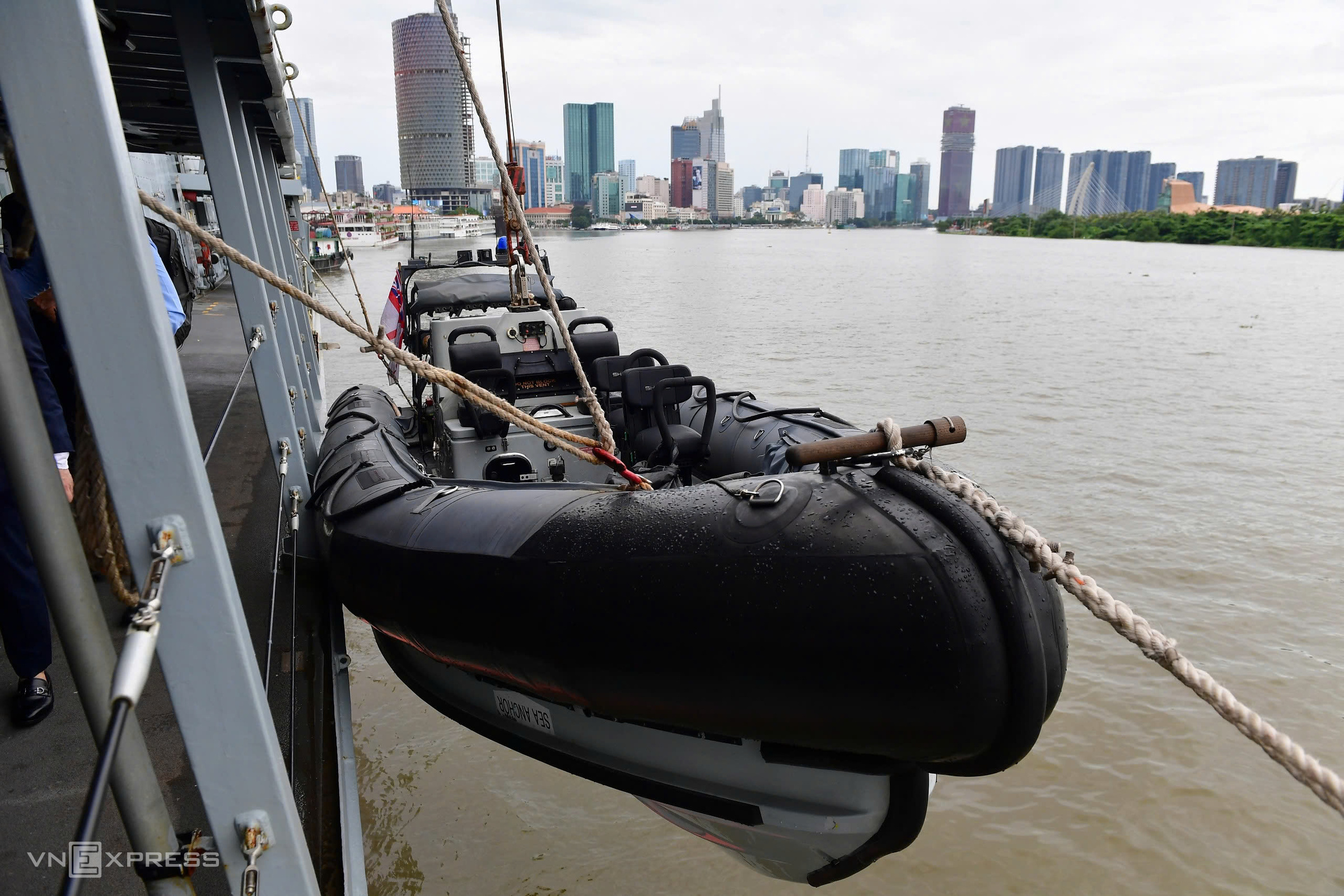 |
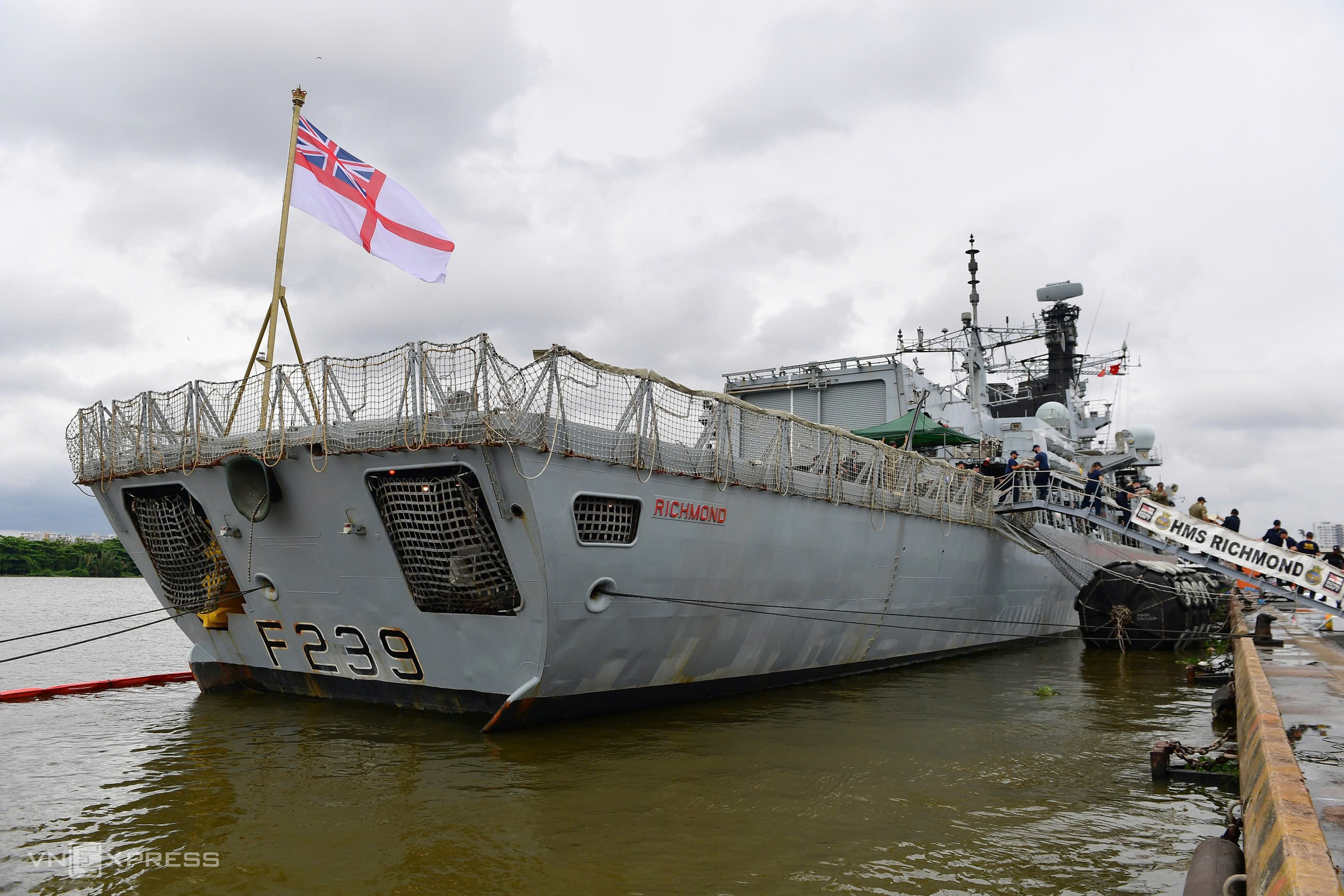 |
Thanh Tung - Thanh Danh





